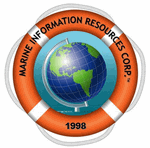Event Title
Start Date
7-12-2017 12:00 PM
End Date
7-12-2017 12:45 PM
Description
The United States has a theoretical ocean wave energy resource potential of 1,594–2,640 TWh/year, enough to power between 143.5 and 237.6 million homes/year and contribute substantially to the United States’ energy portfolio [1]. However, wave energy converters (WECs) are currently in the early stages of research and development at low technology readiness levels. Open ocean deployment data is from demonstration-scale projects, not from utility-scale deployments. As a result, researchers, developers, and regulators rely heavily on numerical models to understand the environmental effects of wave farms.
Preliminary numerical studies have demonstrated that small-scale deployments of ~10 WECs or less have little to no impact on the physical environment. But utility-scale wave farms may affect the near-field and nearshore wave environment, circulation patterns, and nearshore processes such as sediment transport. A suite of open source codes has been developed by Sandia National Laboratories focused on simulating the energy extraction of WECs to better understand and predict their potential environment effects.
Included in
Overview of open source codes to assess environmental effects of ocean wave farms (Extended Abstract)
The United States has a theoretical ocean wave energy resource potential of 1,594–2,640 TWh/year, enough to power between 143.5 and 237.6 million homes/year and contribute substantially to the United States’ energy portfolio [1]. However, wave energy converters (WECs) are currently in the early stages of research and development at low technology readiness levels. Open ocean deployment data is from demonstration-scale projects, not from utility-scale deployments. As a result, researchers, developers, and regulators rely heavily on numerical models to understand the environmental effects of wave farms.
Preliminary numerical studies have demonstrated that small-scale deployments of ~10 WECs or less have little to no impact on the physical environment. But utility-scale wave farms may affect the near-field and nearshore wave environment, circulation patterns, and nearshore processes such as sediment transport. A suite of open source codes has been developed by Sandia National Laboratories focused on simulating the energy extraction of WECs to better understand and predict their potential environment effects.



